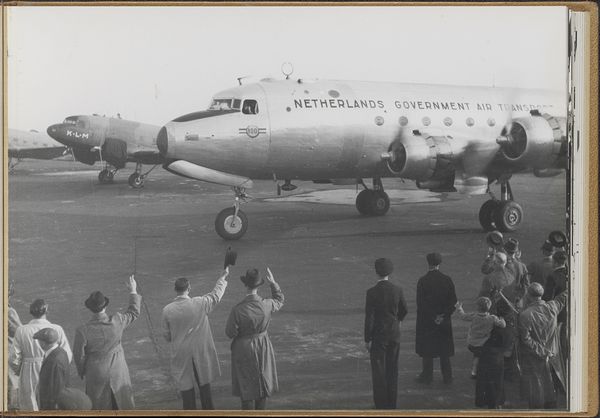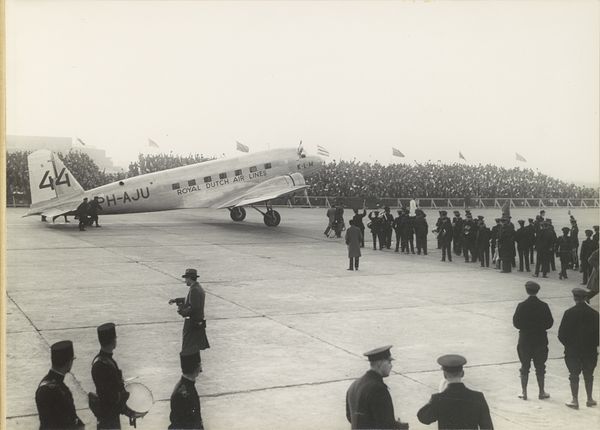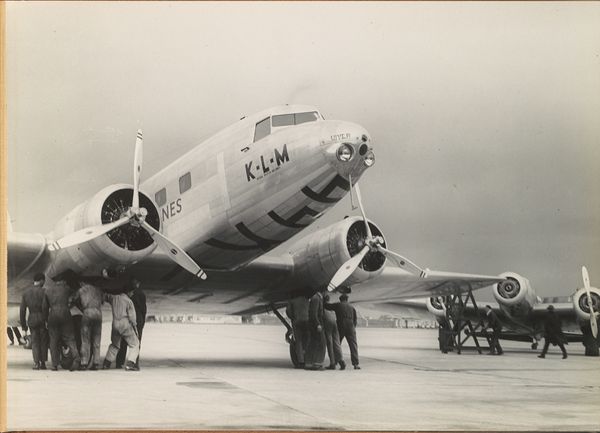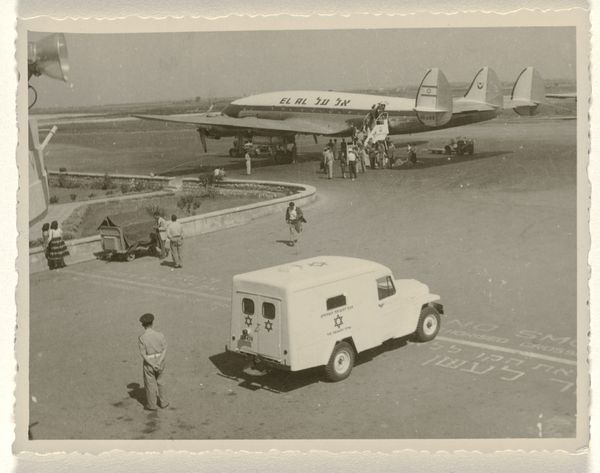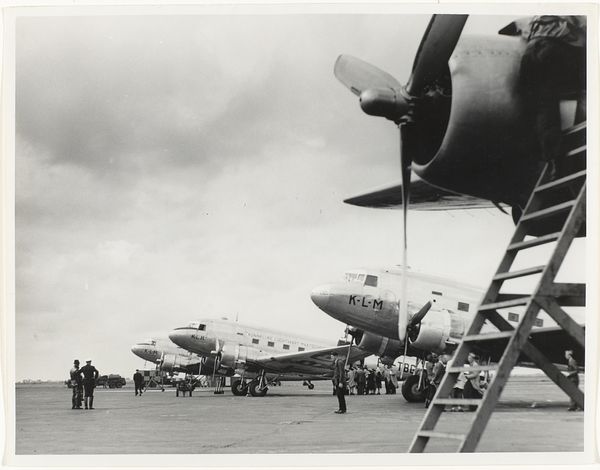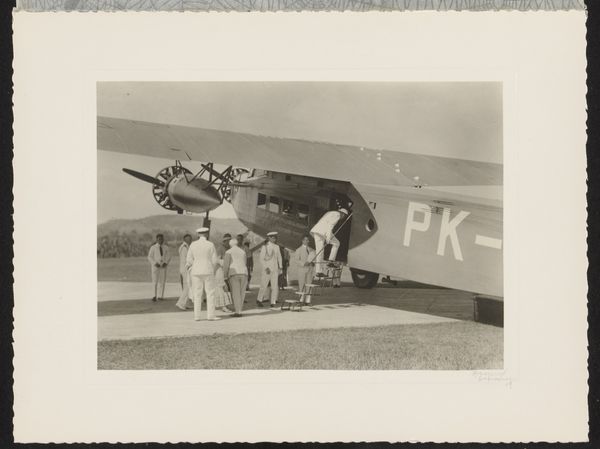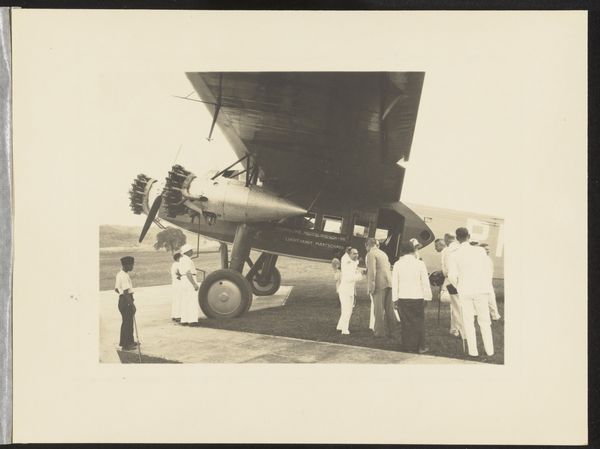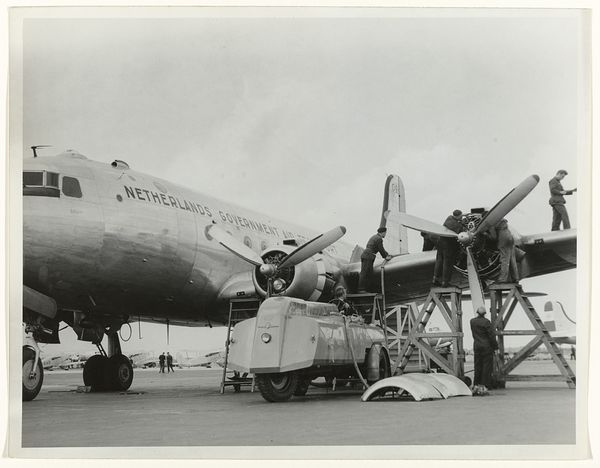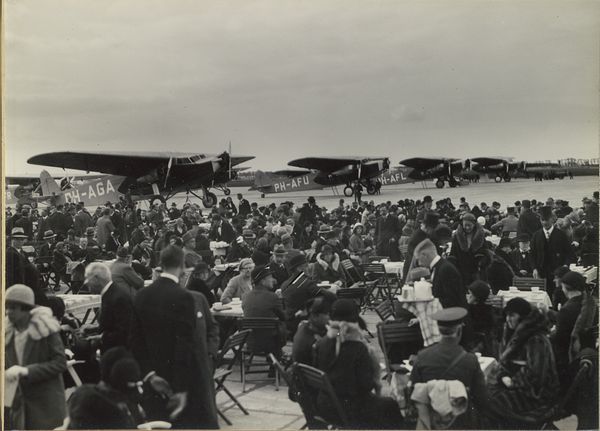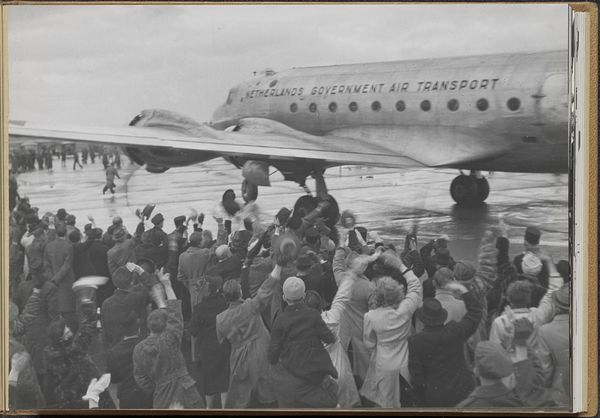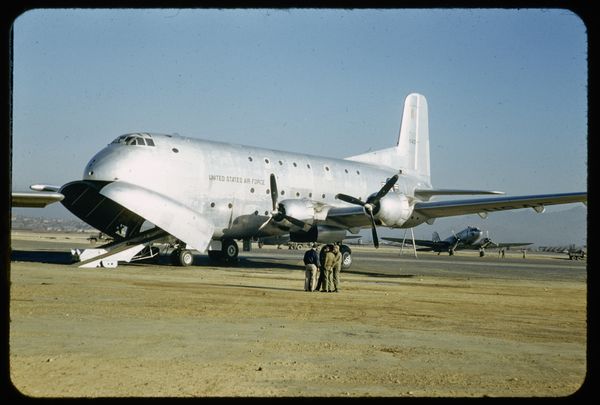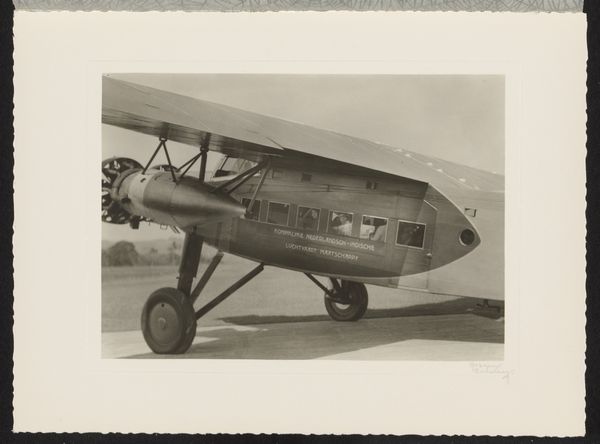
photography
#
landscape
#
historic architecture
#
traditional architecture
#
photography
#
history-painting
#
historical font
Dimensions: height 272 mm, width 395 mm
Copyright: Rijks Museum: Open Domain
Curator: This photograph, simply titled "DC-3 PH-ARE 'Emoe' en PH-ALO 'Oehoe' op Schiphol," was taken in 1938 by an anonymous photographer. It resides here at the Rijksmuseum, capturing a very specific moment in aviation history. Editor: Immediately, I'm struck by the almost palpable sense of occasion. The orderly lines of the paving, the small figures gathered, all in shades of grey, and of course the gleaming aircraft. It's an industrial landscape trying its best to be festive. Curator: Festive indeed. The flags really do attempt to convey that, don't they? Let's consider the materiality though, I am curious: the smooth skin of those DC-3s. This would be aircraft construction from a pivotal moment in history. Wartime was around the corner, yet aviation was still held in this place of public fascination. And of course, Schiphol... its own material, built literally from drained marshland. What does this confluence say to you? Editor: Well, the materials used speak volumes, the aluminum for speed and lightness versus the sheer effort needed to construct the runways upon which they stand—the steel and concrete undercarriage allude to more static industries. Curator: True. And consider the clothing. Everyone is bundled up, ready for flight. You almost feel that anticipation of being transported. A moment of excitement, of travel, rendered utterly still, flat, permanent by the photograph itself. The tonal gradations are so soft, it's incredibly elegant for an industrial image. Editor: Yes, the monochrome is key, of course; it reduces the planes, those marvels of new materials and engineering, down to a form—not unlike an older zeppelin. Are the gathered people mainly workers involved with manufacture, or the would-be fliers themselves? That’s an important context in any examination of such imagery, and helps ground the excitement. Curator: And the names "Emoe" and "Oehoe", whimsical choices which feel utterly disconnected from our perspective today. Those small details become quite emotionally resonant, these glimpses into the daily operation and pride that comes through even in the choice of typeface. Editor: Exactly, even in reproduction now, a sense of that golden age, perhaps more so than the reality itself; what did these people dream about for air travel, mass tourism and mass destruction? How those planes represented both sides of the coming battle to control all the materials of flight and of movement across land and sea? Curator: Perhaps in that dream of movement, there was hope that things would never be quite what they became... Thank you, it’s useful to ponder on all the labour, time and investment embedded here, that this seemingly straightforward record holds inside. Editor: My pleasure. And let’s be honest—the photographic reproduction process itself? Also vital material!
Comments
No comments
Be the first to comment and join the conversation on the ultimate creative platform.
